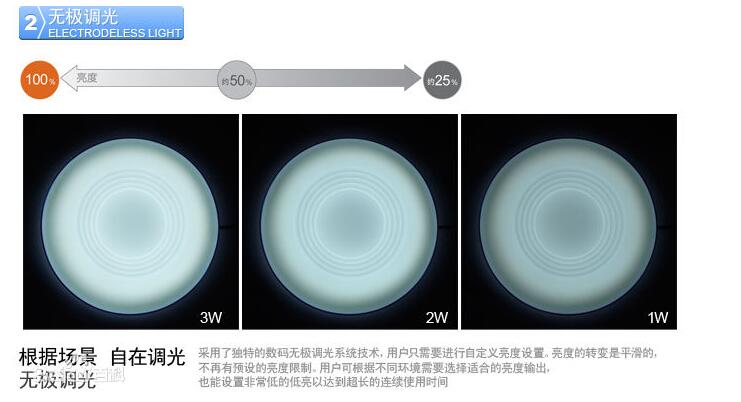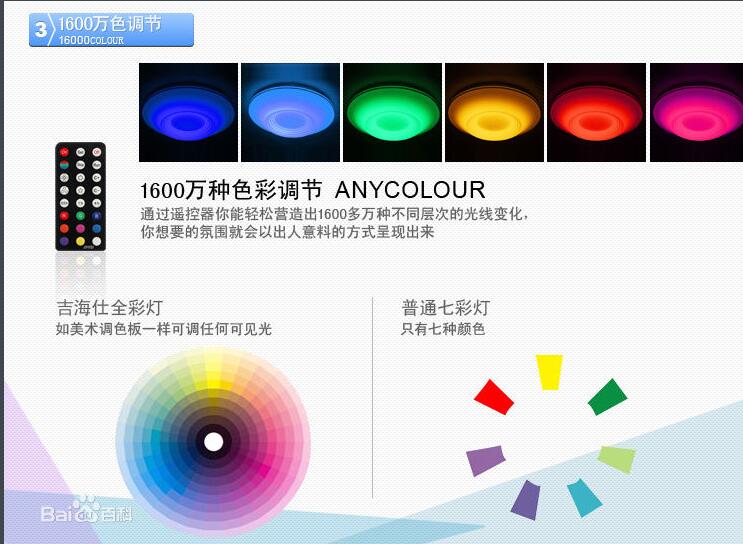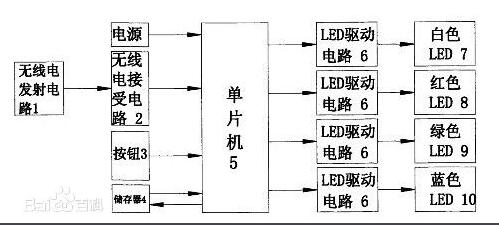
Privacy statement: Your privacy is very important to Us. Our company promises not to disclose your personal information to any external company with out your explicit permission.
Full-color LED light is a new type of LED magic light. It adds professional white light illumination function based on the magic LED light. It can provide professional lighting white light and adjust the color and brightness of the light at will.
Full-color LED lights use white, red, green, blue (R, G, B) four basic color LED lamp bead chips, each chip is a single color LED. These lamp bead chips are packaged in various forms, and each set of colors can be used separately and separately connected to the drive circuit and the single chip microcomputer. Illuminated white light includes cool white and warm white.
It is widely used in urban landscape lighting, architectural outlines, sidewalk embellishments of roads and bridges, architectural buildings, entertainment venues, KTV, nightclubs and other nightscapes.
The working principle of full color LED lightsThe full-color LED lamp adopts white (including various white light such as cool white and warm white), red, green and blue (R, G, B) four basic color LED lamp bead chips, these lamp bead chips in various forms For packaging, each set of colors can be used separately and separately connected to the drive circuit and the microcontroller.
The user can adjust the brightness of the chips of white, red, green and blue (R, G, B) four-color lamp beads through the remote control or the wired connection button on the lamp;

It can also control three kinds of LED lamp bead chips of red, green and blue (R, G, B) according to the principle of optical three primary colors (all colors can be mixed with a certain proportion of three primary colors red, green and blue) to approximate almost all human eyes. Visible light color.


1) Professional LED lighting white light: soft / eye protection / no flicker / close to natural light
2) Full color: adjustable with a variety of colors (currently can adjust more than 16 million kinds of brilliant colors)
3)Intelligence: Remote control of light color / brightness adjustment / switch light / timing
4) Modular design, no restrictions on the shape of the lamp
5) Energy saving and environmental protection, long service life
Full color LED lights emit colorful light calculationsLight-emitting diodes, referred to as LEDs, are composed of a PN junction and have unidirectional conductivity, just like ordinary diodes. When a forward voltage is applied to the light-emitting diode, holes injected from the P region into the N region and electrons injected into the P region from the N region are respectively separated from the electrons of the N region and the P region within a few micrometers near the PN junction. The hole complexes to produce fluorescence of spontaneous radiation. The energy states of electrons and holes in different semiconductor materials are different. When the energy released by the recombination of electrons and holes is different, the more energy is released, the shorter the wavelength of the emitted light.
The color of the light-emitting diode does not depend on the color of the outer seal plastic, but on the material of the light-emitting semiconductor. Gallium arsenide is one of them. A diode made of a compound of gallium (Ga) and arsenic (AS) or phosphorus (P) emits visible light when electrons and holes recombine. The gallium arsenide diode emits red light, the gallium phosphide diode emits green light, and the silicon carbide diode emits yellow light. Commonly used high-power monochrome light-emitting diodes are produced in red, green, and blue light, as well as green and yellow light.
The color of the illumination of a conventional monochromatic LED is related to the wavelength of the illumination, which in turn depends on the semiconductor material used to fabricate the LED. The wavelength of the red LED is generally 650~700nm, the wavelength of the amber LED is generally 630~650 nm, the wavelength of the orange LED is generally 610~630 nm, and the wavelength of the yellow LED is about 585 nm. The wavelength of the diode is typically 555~570 nm.
High-brightness monochromatic light-emitting diodes and ultra-high-brightness monochromatic light-emitting diodes use semiconductor materials different from ordinary monochromatic light-emitting diodes, so the intensity of light emission is also different. High-brightness monochromatic LEDs use materials such as gallium arsenide (GaAlAs), ultra-high-brightness monochromatic LEDs use materials such as phosphorus indium gallium arsenide (GaAsInP), while ordinary monochromatic light-emitting diodes use gallium phosphide (GaP) or Materials such as phosphorus gallium arsenide (GaAsP).

Full-color LED lights are generally integrated with red, green and blue monochromatic tubes. There are usually two integrated methods: one is three RGB designs on the same aluminum substrate, and the other is three RGB chip bindings. Into an LED package. When the full-color LED lamp is working, the required color is synthesized by three-color addition, red and green are synthetic yellow, red and blue are synthetic magenta, green and blue are synthetic blue, and red, green and blue are synthetic white. The synthesized color is also determined by the illuminating gradation of the primary color, the illuminating gradation of the single color is different, and the synthesized color is also different. If each color produces 256 gray levels and controls the gray levels of the three colors separately, you can combine 256*256*256 kinds (16777216 colors), that is, you can synthesize 16 million kinds using RGB three primary colors. colour. In the actual product design, if you use a variety of units, and under the control of the software, you can display more delicate and vivid patterns and animation effects.
The LED gradation is determined by the driver chip. The full-color driver chip has a built-in gradation generator. It is generally PWM-based, and the high-frequency control LED that is indistinguishable by the human eye can quickly turn on and off to achieve gray level control. Common channel chips on the market have three gray levels: 8 bits (256), 10 bits (1024), and 13 bits (8192).
November 21, 2022
September 29, 2022
August 10, 2024
April 30, 2024
September 29, 2024
November 18, 2023
Bu tedarikçi için e-posta
November 21, 2022
September 29, 2022
August 10, 2024
April 30, 2024
September 29, 2024
November 18, 2023

Privacy statement: Your privacy is very important to Us. Our company promises not to disclose your personal information to any external company with out your explicit permission.

Fill in more information so that we can get in touch with you faster
Privacy statement: Your privacy is very important to Us. Our company promises not to disclose your personal information to any external company with out your explicit permission.